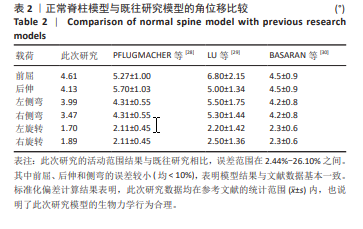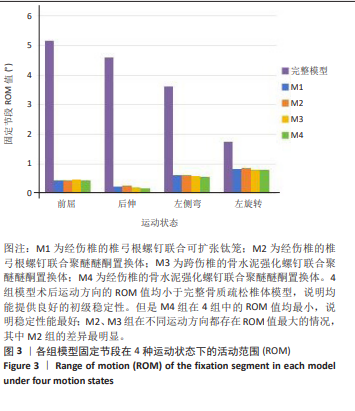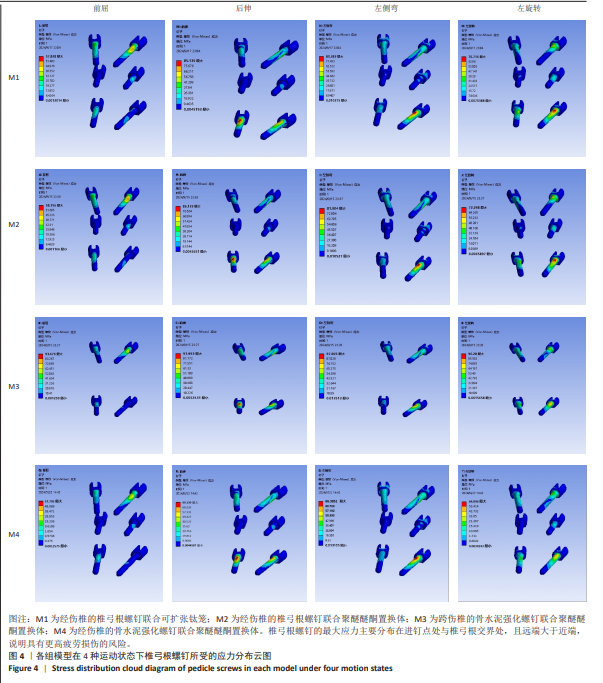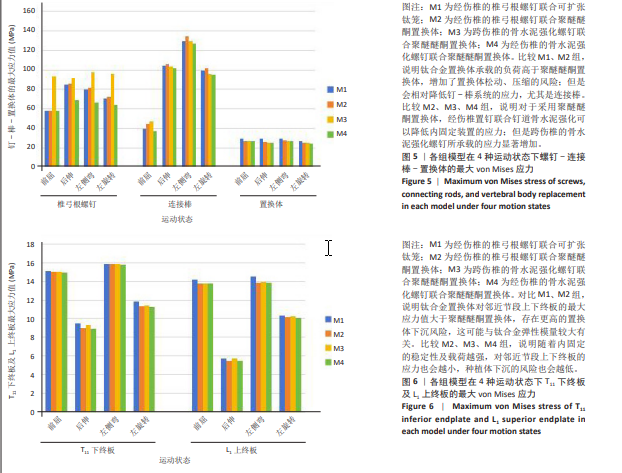[1] RAJASEKARAN S, KANNA RM, SCHNAKE KJ, et al. Osteoporotic thoracolumbar fractures-how are they different?-Classification and treatment algorithm. J Orthop Trauma. 2017;31(Suppl 4):S49-S56.
[2] TSUJIO T, NAKAMURA H, TERAI H, et al. Characteristic radiographic or magnetic resonance images of fresh osteoporotic vertebral fractures predicting potential risk for nonunion: A prospective multi center study. Spine (Phila Pa 1976). 2011;36(15):1229-1235.
[3] HOFFMANN J, PRESTON G, WHALEY J, et al. Vertebral Augmentation in Spine Surgery. J Am Acad Orthop Surg. 2023;31(10):477-489.
[4] KASAPOVIC A, BORNEMANN R, PFLUGMACHER R, et al. Implants for Vertebral Body Replacement - Which Systems are Available and Have Become Established. Z Orthop Unfall. 2021;159(1):83-90.
[5] TAKEUCHI T, YAMAGISHI K, KONISHI K, et al. Radiological Evaluation of Combined Anteroposterior Fusion with Vertebral Body Replacement Using a Minimally Invasive Lateral Approach for Osteoporotic Vertebral Fractures: Verification of Optimal Surgical Procedure. J Clin Med. 2022;11(3):629.
[6] 苏佳灿, 刘昌胜, 张英泽, 等. 骨质疏松性椎体压缩骨折骨修复策略专家共识(2024版)[J]. 临床外科杂志,2024,41(3):476-482.
[7] 徐宝山, 黎宁, 许海委, 等. 胸腰椎骨质疏松性椎体压缩骨折伴后凸畸形的分级手术策略[J]. 中华骨科杂志,2023,43(11):677-686.
[8] 陈建, 李青青, 顾军, 等. 老年骨质疏松性胸腰段椎体骨折伴后凸畸形诊疗指南(2024版)[J]. 中华创伤杂志,2024,40(11):961-973.
[9] SCHWENDER M, MOTOV S, RYANG YM, et al. Dorsal instrumentation with and without vertebral body replacement in patients with thoracolumbar osteoporotic fractures shows comparable outcome measures. Eur Spine J. 2022;31(5):1138-1146.
[10] ALHASHASH M, SHOUSHA M. Minimally Invasive Short-Segment Anteroposterior Surgery for Thoracolumbar Osteoporotic Fractures with Canal Compromise: A Prospective Study with a Minimum 2-Year Follow-up. Asian Spine J. 2022;16(1):28-37.
[11] 许勇, 官众, 李永霞, 等. 经伤椎和跨伤椎置钉内固定治疗胸腰椎骨折的早中期效果分析[J]. 中国组织工程研究,2020,24(12):1823-1828.
[12] POKORNI AJ, TURBUCZ M, KISS RM, et al. Comparison of anterior column reconstruction techniques after en bloc spondylectomy: a finite element study. Sci Rep. 2023;13(1):18767.
[13] DEML MC, MAZURET SEPULVEDA CA, ALBERS CE, et al. Anterior column reconstruction of the thoracolumbar spine with a new modular PEEK vertebral body replacement device: retrospective clinical and radiologic cohort analysis of 48 cases with 1.7-years follow-up. Eur Spine J. 2020; 29(12):3194-3202.
[14] SCHWENDNER M, ILLE S, KIRSCHKE JS, et al. Clinical evaluation of vertebral body replacement of carbon fiber-reinforced polyetheretherketone in patients with tumor manifestation of the thoracic and lumbar spine. Acta Neurochir (Wien). 2023;165(4):897-904.
[15] LIAO JC. Impact of osteoporosis on different type of short-segment posterior instrumentation for thoracolumbar burst fracture-a finite element analysis. World Neurosurg. 2020;139:e643-e651.
[16] KANG S, PARK CH, JUNG H, et al. Analysis of the physiological load on lumbar vertebrae in patients with osteoporosis: a finite element study. Sci Rep. 2022;12(1):11001.
[17] SHIRAZI SA, SHRIVASTAVA SC, AHMED AM. Stress analysis of the lumbar disc-body unit in compression. A three-dimensional nonlinear finite element study. Spine (Phila Pa 1976). 1984;9(2):120-134.
[18] XILONG C, JUNJUN Z, YULIANG S, et al. Biomechanical Comparison of Different Treatment Strategies for Thoracolumbar Burst Fracture: A Finite Element Study. World Neurosurg. 2023;180:e429-e439.
[19] WANG W, BARAN GR, GARG H, et al. The Benefits of Cement Augmentation of Pedicle Screw Fixation Are Increased in Osteoporotic Bone: A Finite Element Analysis. Spine Deform. 2014;2(4):248-259.
[20] GUO HZ, ZHANG SC, GUO DQ, et al. Influence of cement-augmented pedicle screws with different volumes of polymethylmethacrylate in osteoporotic lumbar vertebrae over the adjacent segments: a 3D finite element analysis. BMC Musculoskelet Disord. 2020;21(1):460.
[21] GOEL VK, RAMIREZ SA, KONG W, et al. Cancellous bone Young’s modulus variation within the vertebral body of a ligamentous lumbar spine--application of bone adaptive remodeling concepts. J Biomech Eng. 1995;117(3):266-271.
[22] SHIRAZI A, AHMED AM, SHRIVASTAVA SC. A finite element study of a lumbar motion segment subjected to pure sagittal plane moments. J Biomech. 1986;19(4):331-350.
[23] POLIKEIT A, NOLTE LP, FERGUSON SJ. The effect of cement augmentation on the load transfer in an osteoporotic functional spinal unit: finite-element analysis. Spine (Phila Pa 1976). 2003;28(10):991-996.
[24] KIM Y. Finite element analysis of anterior lumbar interbody fusion: threaded cylindrical cage and pedicle screw fixation. Spine (Phila Pa 1976). 2007;32(23):2558-2568.
[25] CHEN G, XIN B, YIN M, et al. Biomechanical analysis of a novel height-adjustable nano-hydroxyapatite/polyamide-66 vertebral body: a finite element study. J Orthop Surg Res. 2019;14(1):368.
[26] ZHANG GD, DU YK, JIANG GZ, et al. Biomechanical evaluation of different posterior fixation techniques for treating thoracolumbar burst fractures of osteoporosis old patients: a finite element analysis. Front Bioeng Biotechnol. 2023;11:1268557.
[27] WU Y, CHEN CH, TSUANG FY, et al. The stability of long-segment and short-segment fixation for treating severe burst fractures at the thoracolumbar junction in osteoporotic bone: A finite element analysis. PLoS One. 2019;14(2):e0211676.
[28] PFLUGMACHER R, SCHLEICHER P, SCHAEFER J, et al. Biomechanical comparison of expandable cages for vertebral body replacement in the thoracolumbar spine. Spine (Phila Pa 1976). 2004;29(13):1413-1419.
[29] LU H, ZHANG Q, DING F, et al. Finite Element Analysis of Unilateral versus Bipedicular Bone-Filling Mesh Container for the Management of Osteoporotic Compression Fractures. Biomed Res Int. 2022;2022: 6850089.
[30] BASARAN R, EFENDIOGLU M, KAKSI M, et al. Finite element analysis of short- versus long-segment posterior fixation for thoracolumbar burst fracture. World Neurosurg. 2019;128:e1109-e1117.
[31] SHIN SR, LEE SS, KIM JH, et al. Thoracolumbar burst fractures in patients with neurological deficit: Anterior approach versus posterior percutaneous fixation with laminotomy. J Clin Neurosci. 2020;75: 11-18.
[32] SCHNAKE KJ, BLATTERT TR, HAHN P, et al. Classification of Osteoporotic Thoracolumbar Spine Fractures: Recommendations of the Spine Section of the German Society for Orthopaedics and Trauma (DGOU). Global Spine J. 2018;8(2 Suppl):46S-49S.
[33] WANG K, ZHANG F, ZHAI Y, et al. Can preoperative magnetic resonance imaging be used for sagittal kyphotic flexibility assessment in patients with kyphosis secondary to symptomatic old osteoporotic thoracolumbar fracture? J Orthop Surg Res. 2023;18(1):133.
[34] 眭涛, 陈建, 黄振飞, 等. 老年骨质疏松性胸腰椎骨折后脊柱重建临床指南(2022版)[J]. 中华创伤杂志,2022,38(12):1057-1066.
[35] ULLRICH BW, SCHENK P, SCHEYERER MJ, et al. Georg Schmorl prize of the German spine society (DWG) 2022: current treatment for inpatients with osteoporotic thoracolumbar fractures-results of the EOFTT study. Eur Spine J. 2023;32(5):1525-1535.
[36] SPIEGL UJA, SCHENK P, SCHNAKE KJ, et al. Working Group Osteoporotic Fractures of the Spine Section of the German Society of Orthopaedics and Trauma. Treatment and Outcome of Osteoporotic Thoracolumbar Vertebral Body Fractures With Deformation of Both Endplates With or Without Posterior Wall Involvement (OF 4): Short-Term Results from the Prospective EOFTT Multicenter Study. Global Spine J. 2023; 13(1_suppl):36S-43S.
[37] ADLER D, AKBAR M, SPICHER A, et al. Biomechanical Study of a Novel, Expandable, Non-Metallic and Radiolucent CF/PEEK Vertebral Body Replacement (VBR). Materials (Basel). 2019;12(17):2732.
[38] SIRCAR K, WEBER M, WALTER SG, et al. Torque forces of expandable titanium vertebral body replacement cages during expansion and subsidence in the osteoporotic lumbar spine. Clin Biomech (Bristol, Avon). 2024;114:106239.
[39] XU C, BAI X, RUAN D, et al. Comparative finite element analysis of posterior short segment fixation constructs with or without intermediate screws in the fractured vertebrae for the treatment of type a thoracolumbar fracture. Comput Methods Biomech Biomed Engin. 2024;27(11):1398-1409.
[40] GUO HZ, TANG YC, GUO DQ, et al. The cement leakage in cement-augmented pedicle screw instrumentation in degenerative lumbosacral diseases: a retrospective analysis of 202 cases and 950 augmented pedicle screws. Eur Spine J. 2019;28(7):1661-1669.
[41] 郑雪静, 梅伟, 朱彦谕, 等. 伤椎置钉结合经椎弓根打压植骨治疗Ⅲ期Kümmell病:快速恢复脊柱稳定[J]. 中国组织工程研究, 2024,28(18):2865-2870.
[42] 冷俊胜, 曾岩, 陈仲强. 骨水泥强化椎弓根螺钉技术在脊柱手术中的应用[J]. 中华骨科杂志,2019,39(10):637-644.
[43] TSUANG FY, LI MJ, CHU PH, et al. Mechanical performance of porous biomimetic intervertebral body fusion devices: an in vitro biomechanical study. J Orthop Surg Res. 2023;18(1):71.
[44] LIMTHONGKUL W, WANNARATSIRI N, SUKJAMSRI C, et al. Biomechanical Comparison Between Posterior Long-Segment Fixation, Short-Segment Fixation, and Short-Segment Fixation With Intermediate Screws for the Treatment of Thoracolumbar Burst Fracture: A Finite Element Analysis. Int J Spine Surg. 2023;17(3):442-448.
[45] MIRZAALI MJ, SCHWIEDRZIK JJ, THAIWICHAI S, et al. Mechanical properties of cortical bone and their relationships with age, gender, composition and microindentation properties in the elderly. Bone. 2016;93:196-211. |



